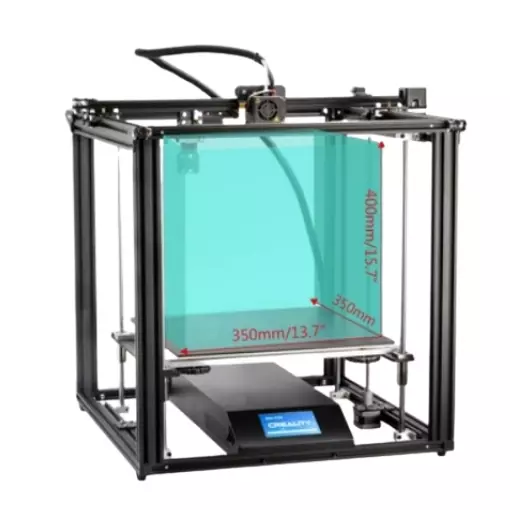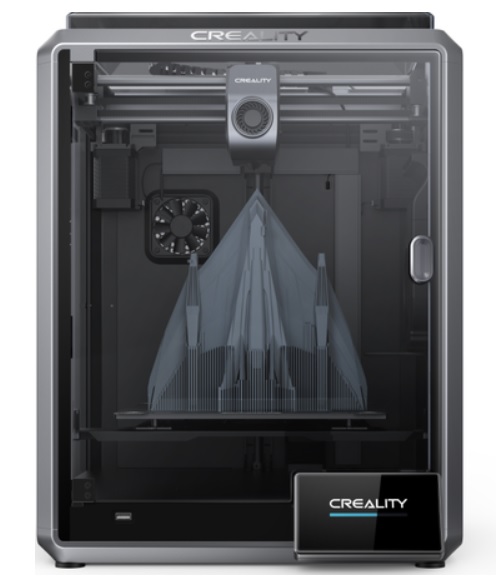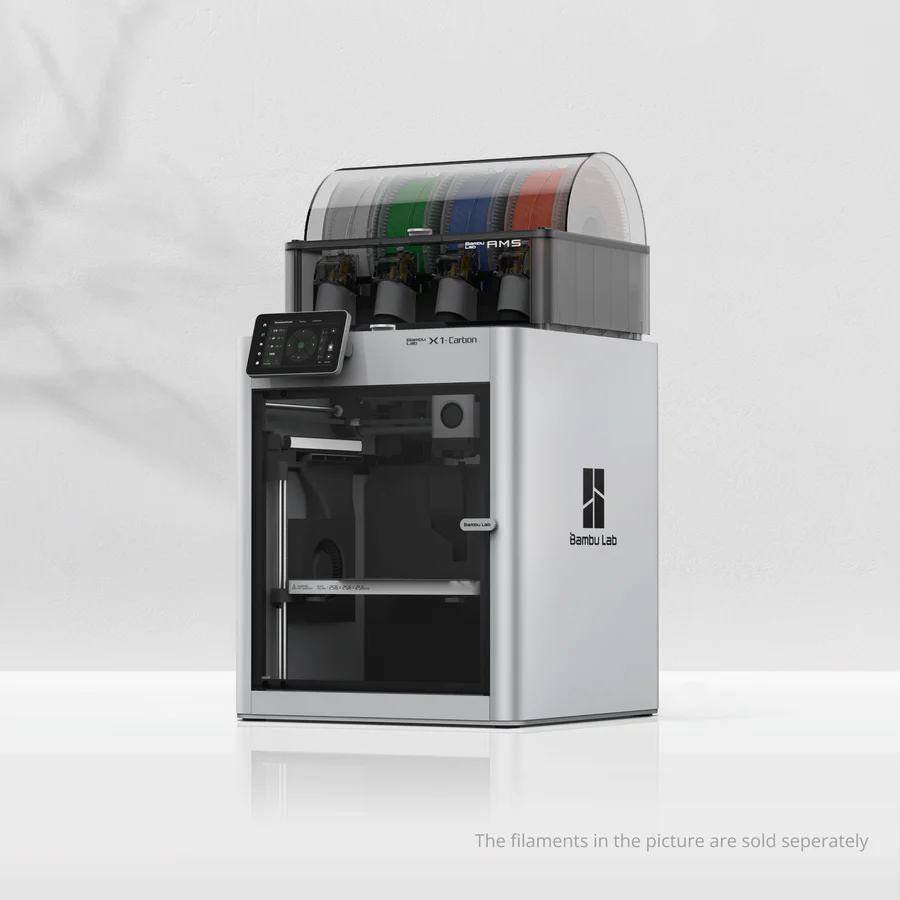Compare Ender 5 Plus vs K1 vs X1 carbon
Comparison between the best 3D printers
Choose the best 3D printer at the best price. The cheapest 3D printers are here.
Buy a 3D printer here with 3D Fila.
 |
 |
 |
|
| Model | Ender 5 Plus[BUY Ender 5 Plus] |
K1[BUY K1] |
X1 carbon |
| Estimated price | $599,00 | $399,00 | $1449,00 |
| Fabricante | Creality 3D | Creality 3D | Bambu Lab |
| Release Year | 2019 | 2023 | 2023 |
| Print Volume [mm] | 350x350x400 | 220x220x250 | 256x256x256 |
| Printer Size [mm] | 632x619x666 | 355x355x480 | 389x389x457 |
| Weight [kg] | 18,2 | 12,5 | 14,13 |
| Power Loss Recovery | YES | YES | YES |
| Enclosed printer | NO | YES | NO |
| Bed Leveling | Automatic | Automatic | Automatic |
| Filament End Sensor | YES | YES | YES |
| Bed type | Heated | Heated | Heated |
| Power supply system | Bowden | Direct Drive | Direct Drive |
| Standard nozzle | 0,4 | 0,4 | 0,4 |
| Maximum Nozzle Temperature [°C] | 260 | 300 | 300 |
| Maximum Bed Temperature [°C] | 100 | 120 | 120 |
| Maximum printing speed [mm/s] | 180 | 600 | 500 |
| Filament holder | YES | YES | YES |
| Camera for supervision | NO | NO | YES |
| Recommended filaments | PLA, TPU, ABS, PETG | ABS, PLA, PETG, PET, TPU, PA, ABS, ASA, PC, PLA-CF, PA-CF, PET-CF | PLA, PETG, TPU, PVA, PA, PA-CF, Nylon, PC |
| Recommended slicers | Cura, Simplify, Slic3r | Creality Print; Cura, Simplify3D e PrusaSlicer | Bambu Studio, Super Slicer, Cura, Prusa Slicer, Orca |
| Maximum Resolution [mm] | 0,1 | 0,1 | 0,1 |
| Processor | 32 bits | Quad ARM A7 1.2 GHz | |
| Display | Touchscreen TFT 4,3'' | Display touchscreen 4,3'' | Touchscreen 5'' |
| Power Supply | 24V / 504W | 110/220V / 350W | 350 W |
| Connectivity | SD / USB | Ethernet / USB / Wi-Fi | Wifi, Bambu bus, Cartão SD |
| Operating systems | Windows, Mac, Linux | Windows, Mac, Linux | Windows, Linux, Macbook |
| Date of registration in the system | 2021-04-14 | 2023-04-17 | 2024-04-10 |
| Release date | 2019 | 2023 | 2023 |
| Extra features | The Ender 5 Plus offers a large print volume (350x350x400 mm) and fast assembly. It includes a BLTouch sensor, but with range limitations. It stands out for its dimensional accuracy, although it requires adjustments to the slicer settings. Despite the noise, its integrated design saves space, and includes features such as a filament sensor and power resumption. Ideal for large projects, it requires refinement in the settings for high-quality prints. | The K1 is an extremely fast FDM 3D printer, reaching 600mm/s, 12 times faster than standard models. Equipped with a Core XY system and lightweight print head, it offers energy efficiency and high print quality. It stands out for its dual-gear extruder and quickly heated hotend, as well as dual cooling to prevent warping. Its robust structure ensures stability at high speed, with optimized software to speed up the printing process. | The Bambu Lab X1 Carbon revolutionizes 3D printing with stunning design, high print speeds, and a streamlined user experience. It stands out with its CoreXY system, a hotend capable of reaching 300°C, allowing for a wide range of filaments. Its LiDAR-assisted bed leveling system, vibration compensation, and AMS multicolor printing capability raise the industry standard. Print quality is impressive, with the ability to fine-tune for perfection. The X1 Carbon, with its closed build volume, not only promises but also delivers one of the most advanced 3D printing experiences available to consumers. |
| Support for multiple colors and materials (AMS and CFS) | NO | NO | YES |
Notes * |
|||
| Cost-benefit | 6 / 10 | 8 / 10 | 7 / 10 |
| Hardware | 2 / 10 | 4.8 / 10 | 6.4 / 10 |
| Screen | . | . | . |
| Print volume | 4 / 10 | 3 / 10 | 4 / 10 |
| Performance | 1 / 10 | 5 / 10 | 4 / 10 |
| [BUY Ender 5 Plus] | [BUY K1] |
Conclusion |
| In comparing the three 3D printers—Ender 5 Plus, K1, and X1 Carbon—each model offers unique advantages that cater to different user needs and budgets. The **Ender 5 Plus**, while being the oldest model in this comparison, provides a substantial print volume and boasts features like power loss recovery and filament sensors, which are essential for reliability in larger projects. However, it requires some tweaking in slicer settings for optimal results and has a cost-benefit ratio that suggests it may not offer the best value compared to its competitors. The **K1** stands out as an extremely cost-effective option for users seeking high-speed printing without breaking the bank. With a print speed of 600 mm/s and advanced features such as a dual-gear extruder and quick-heating capability, it is well-suited for those looking to balance performance and affordability. Its lightweight design and efficient cooling system make it a reliable choice, especially for frequent users. On the other hand, the **X1 Carbon** represents the high-end of the price spectrum, combining cutting-edge technology with high-quality prints. Its capabilities—including a hotend that reaches 300°C and LiDAR-assisted bed leveling—ensure excellent performance across a wide range of materials. Although it is the most expensive option, the inclusion of features like AMS for multi-color printing and advanced vibration compensation provides a premium 3D printing experience. In conclusion, the choice among these three printers depends largely on individual priorities. If budget is the main concern, the K1 offers solid performance at an affordable price. For those needing larger print volumes and proven reliability, the Ender 5 Plus is a practical choice, albeit with some trade-offs in ease of use. Conversely, for users willing to invest in top-tier technology, the X1 Carbon delivers unmatched performance and ease of use, justifying its higher price point. Each printer has its strengths and potential drawbacks, making it essential for buyers to consider their specific requirements and intended use cases when making a decision. |

